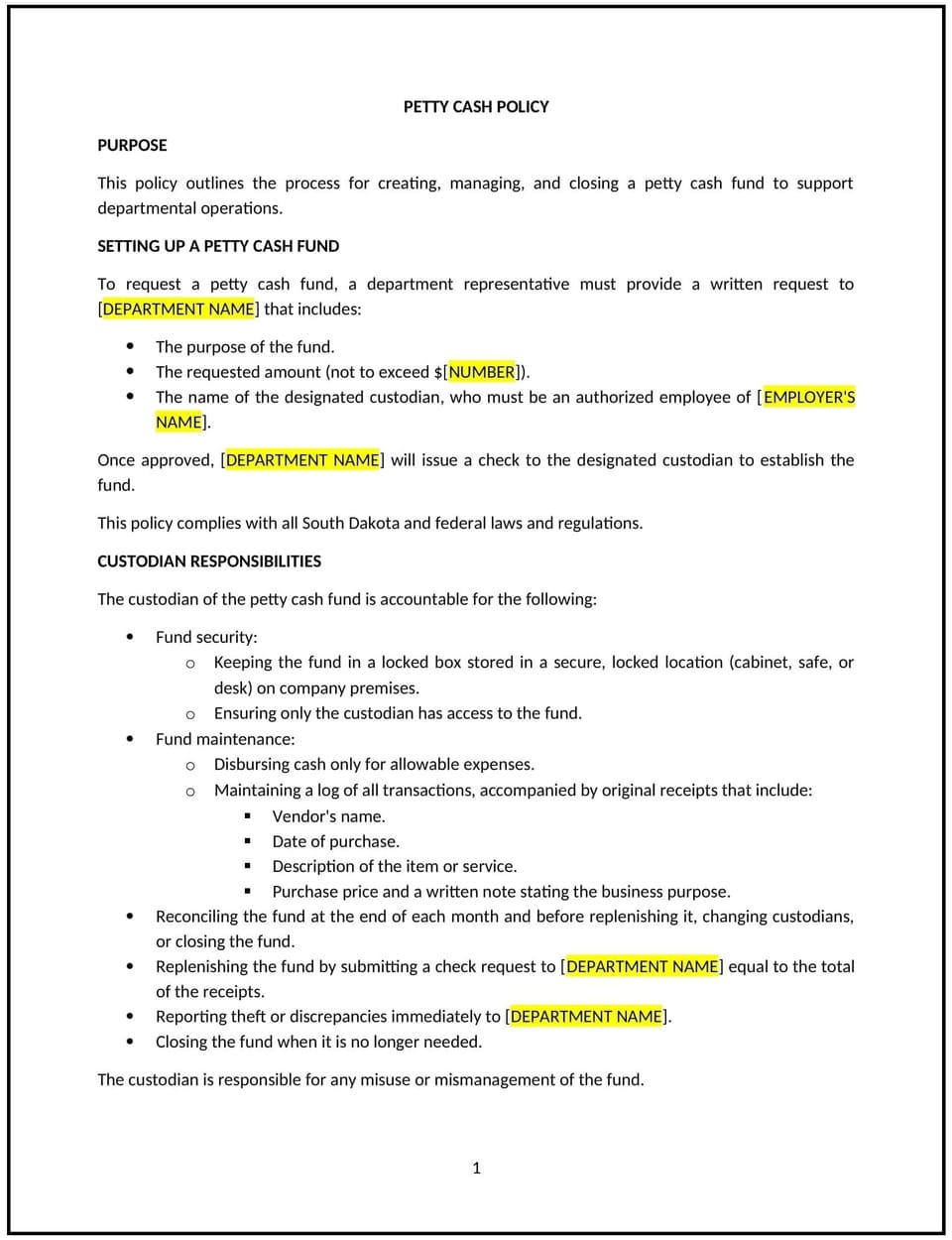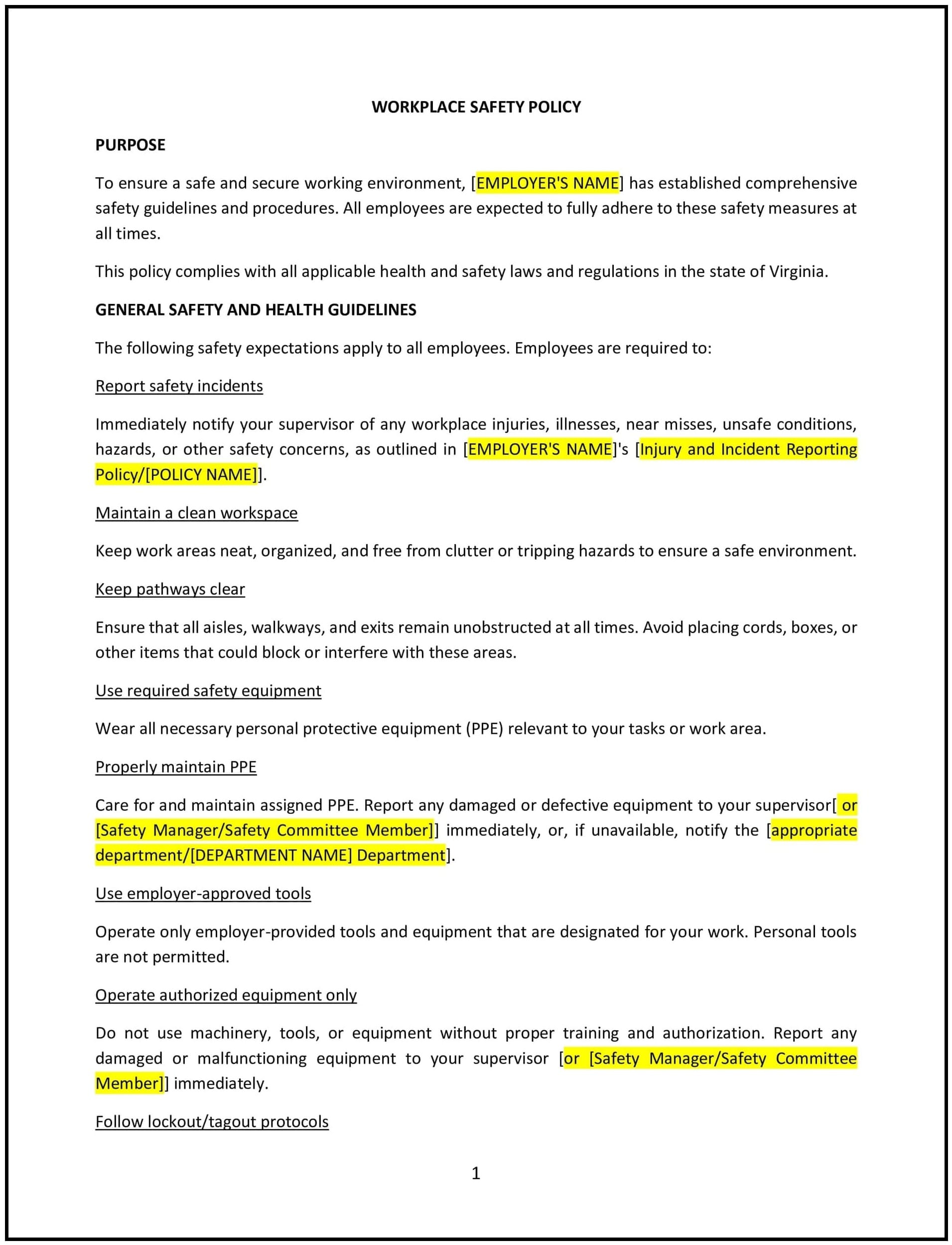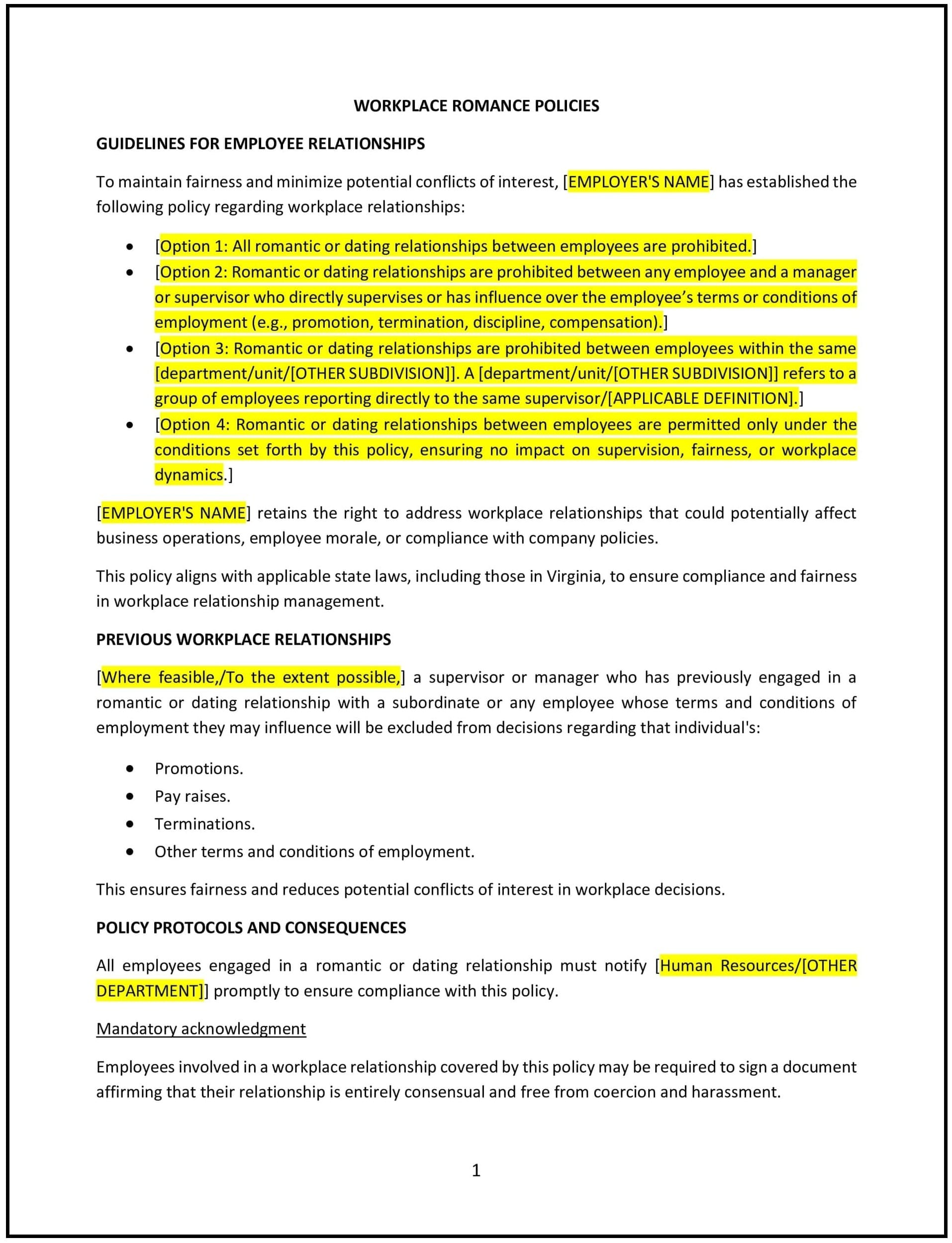Petty cash policy (South Dakota): Free template

Petty cash policy (South Dakota)
This petty cash policy is designed to help South Dakota businesses establish guidelines for managing petty cash funds. It outlines procedures for disbursing, tracking, and reconciling petty cash.
By adopting this policy, businesses can ensure accountability, reduce misuse, and align with general best practices for cash management.
How to use this petty cash policy (South Dakota)
- Define petty cash: Explain what constitutes petty cash, such as small amounts of cash used for minor business expenses.
- Establish fund limits: Specify the maximum amount of petty cash that can be maintained and disbursed.
- Outline disbursement procedures: Provide steps for requesting and approving petty cash disbursements, including documentation requirements.
- Address reconciliation: Specify how petty cash funds will be tracked and reconciled, including regular audits.
- Train employees: Educate staff on the policy and their responsibilities for managing petty cash.
- Monitor implementation: Regularly review petty cash transactions to ensure adherence to the policy.
- Review and update: Assess the policy annually to ensure it aligns with evolving business needs and cash management practices.
Benefits of using this petty cash policy (South Dakota)
This policy offers several advantages for South Dakota businesses:
- Ensures accountability: Demonstrates a commitment to transparent and responsible cash management.
- Reduces misuse: Helps prevent unauthorized or improper use of petty cash funds.
- Enhances efficiency: Provides clear guidelines for disbursing and tracking petty cash, streamlining processes.
- Builds trust: Shows employees that the business values financial integrity and accountability.
- Supports best practices: Aligns with industry standards for petty cash management.
Tips for using this petty cash policy (South Dakota)
- Communicate the policy: Share the policy with employees and include it in training materials.
- Provide training: Educate staff on the importance of managing petty cash responsibly and transparently.
- Monitor implementation: Regularly review petty cash transactions to ensure adherence to the policy.
- Address issues promptly: Take corrective action if petty cash is misused or mismanaged.
- Update regularly: Assess the policy annually to ensure it aligns with evolving cash management practices.
Q: How does this policy benefit businesses?
A: By managing petty cash effectively, businesses can ensure accountability, reduce misuse, and enhance efficiency.
Q: What are examples of petty cash expenses?
A: Examples include office supplies, postage, small repairs, and other minor business expenses.
Q: How should businesses handle petty cash reconciliation?
A: Businesses should reconcile petty cash regularly, comparing receipts and disbursements to the remaining balance.
Q: Can employees request reimbursement for petty cash expenses?
A: Yes, employees can request reimbursement by submitting receipts and documentation, as outlined in the policy.
Q: How often should businesses review this policy?
A: Businesses should review the policy annually or as needed to ensure it aligns with evolving cash management practices.
This article contains general legal information and does not contain legal advice. Cobrief is not a law firm or a substitute for an attorney or law firm. The law is complex and changes often. For legal advice, please ask a lawyer.


